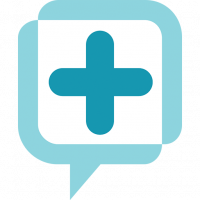Telehealth has advanced more in the last 10 weeks than the last 10 years.
Public health during the novel coronavirus pandemic is a huge concern. This is especially true because it is likely that treatment or vaccines for COVID-19 are months or even years away. Social distancing is likely to continue for a while. Fortunately, telehealth can decrease the strain on the health care system. It’s important for healthcare marketers to get up to speed with these innovative virtual care technologies quickly. With the pandemic crisis, telehealth is rapidly becoming one of our most powerful resources. According to the COVID-19 National Pulse Survey from Blue Cross Blue Shield, virtual care has increased 1.6 times since the summer of 2019.
The Importance of Telehealth
More people than ever are now able to access telehealth services. On March 17, 2020 Centers for Medicare and Medicaid Services (CMS) released a waiver that allows reimbursement for telehealth services. Patients who are unable to access in-person health care services because of social distancing precautions can now access the health care system in multiple ways, such as:
- accessing patient portals to check on test results
- refilling medications
- using virtual monitors
- making appointments
- participating in online consultations
For more detail, the Mayo Clinic has provided a list of ways telehealth improves health care.
Telehealth and Healthcare Marketers
Healthcare marketers have an important role to play in encouraging patients to adapt to new technologies like telehealth. Deloitte has published a road map for healthcare systems to use in implementing telehealth services. It says that “such an effort will require creation of a tailored set of educational materials to support the use of telehealth by patients in general, as well as those with particular medical conditions.” Health risk assessments (HRAs) are an ideal way to deliver these general and targeted messages.
Phase 1 – Calls-to-Actions (CTAs)
CTAs are a great place to promote telehealth. It’s safe to assume that users who take your health risk assessments (HRAs) are concerned about their health. Therefore, to help save them time, let them know what services your health system is offering. Position information about your telehealth resources as a CTA to display right under the assessment result. The best way is to capture patients’ interest. Take maximum advantage of their need to know “what to do next.”
Phase 2 – Follow-Up Plans
Firstly, start thinking about closing the communication loop. For example, aside from CTAs, you can also use the Follow Up email option in the Medicom Client Portal to do this. It is important you first determine how to make the automatic emails more relevant and effective. Information about COVID-19 and access to health services changes frequently. You can easily modify email CTAs to keep current with changing conditions. You can even take it a step further and utilize the Client Portal Notification area to receive an email about an individual with a specific result when they complete a health assessment. These small steps expand the ability of your health system to reach out with specific, timely and targeted information to individuals in your community.
In the immortal words of Benjamin Franklin: “out of adversity comes opportunity.” For U.S. healthcare, virtual health innovations are an opportunity to create lasting positive change.
However, we know that implementing change is never easy. Medicom Health is committed to helping you. A brighter future of opportunity is coming and with these changes there will be many questions. If you need help strategizing ideas, feel free to contact the Client Success Team.















 Thank you for your interest.
Thank you for your interest.